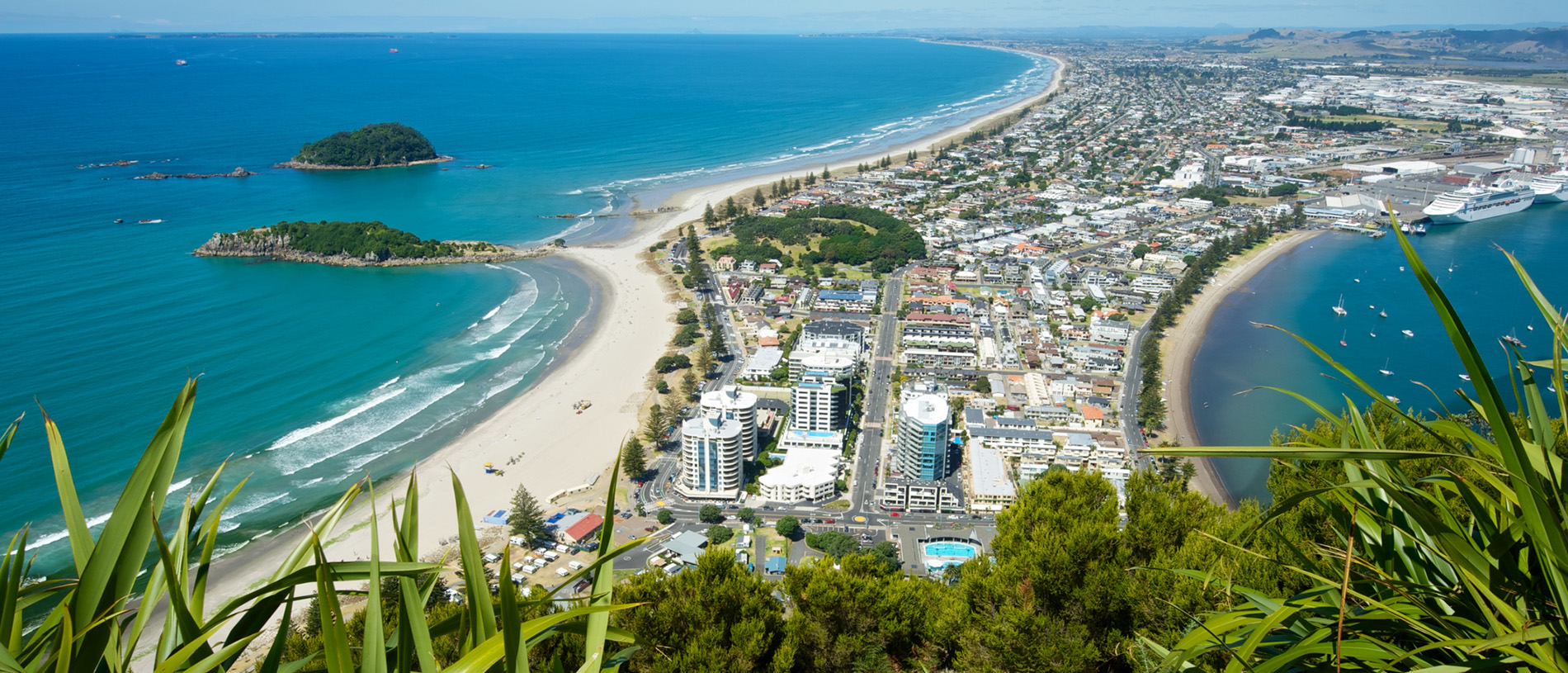
Mauao Mount Maunganui: the view worth the climb
Savour the view from the summit or revel in the glorious beaches around the base track of this sacred maunga.
The proper Māori name of Mauao – or ‘the Mount’, as most New Zealanders tend to call it these days – has a certain poetry that ‘Maunganui’ (‘big hill’) does not.
Mauao means ‘caught in the light of the day', alluding to the Arawa story of how the hill came to be where it is, isolated out at the end of the peninsula that forms the southern headland of the entrance to Tauranga Harbour.
The legend is a version of that eternal story: the love triangle. Poor old Mauao was once pononga (a slave) to a mountain called Ōtanewainuku, situated about 40 kilometres due south of Tauranga, the highest point in the Mamaku Range. The slave hill, then nameless, was in love with Puwhena, but she was already Ōtanewainuku’s special hill-friend and therefore spoken for.
What’s a heartbroken, love-lorn hill to do? He resolved to drown himself in the Pacific and enlisted the patupaiarehe folk to help him do it. He cast a spell to make himself portable for a limited time, and the fairy folk obligingly set about dragging him toward the ocean.
Typical tradesmen, they didn’t quite get the job done in time, and when they vanished back to the depot (or wherever nocturnal fairies hang out in daytime), dawn found the jilted lover yards from his watery objective. With the first touch of sunlight, the spell wore off and Tauranga acquired the cocked silhouette of its most striking landmark, while the Kaimāīs were left with space where the sad old hill used to be.
Of course, geologists will tell you that Mauao is really the remnants of a rhyolite volcanic cone, but where’s the romance in that?
Generations of Kiwis have come in the summer to enjoy the superb surf beach, the 3.4-kilometre track around the foot of Mount Maunganui and the peerless view of the Bay of Plenty and Tauranga Harbour from the Mount’s 231-metre summit.
Prosperity arrived here in the 1950s, in the shape of a happy coincidence of an Asian building boom, the maturity of millions of hectares of pine forest on the Central Plateau and the decision to locate New Zealand’s fourth export port on the Mount Maunganui peninsula. Since then, the fibrolite baches that once fronted the beach have been overshadowed by palatial holiday homes and high-rise apartment buildings. Many people now live there, but it’s still a summer town at heart.